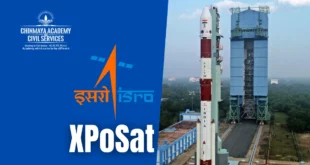Syllabus: Space exploration
- Aditya L1, the first space-based Indian observatory to study the sun – charted for first week of September.
- INSAT-3DS, an earth / climate observation satellite
- a test vehicle as part of the human space flight programme
- NISAR, an India – U.S. synthetic aperture radar – a low-earth orbit observatory – will map the entire globe in 12 days and provide spatially and temporally consistent data to understand changes in the earth’s ecosystems, ice mass, vegetation biomass, sea-level rise, and groundwater, and natural disasters – carries L and S dual band synthetic aperture radar – operates with the sweep SAR technique to cover large swaths with high resolution
- Gaganyaan – demonstrate ISRO’s ability to transport humans to a low-earth orbit onboard an Indian launch vehicle, human-rated Launch Vehicle Mark-3 – consists of a crew module and a service module – circular orbit at an approximate altitude of 400 km for one to three days. The crew module will descend and then fall back down at a designated location in the sea.
- XPoSat, the country’s first dedicated polarimetry mission to study the dynamics of astronomical X-ray sources in extreme conditions
 Chinmaya IAS Academy – Current Affairs Chinmaya IAS Academy – Current Affairs
Chinmaya IAS Academy – Current Affairs Chinmaya IAS Academy – Current Affairs



